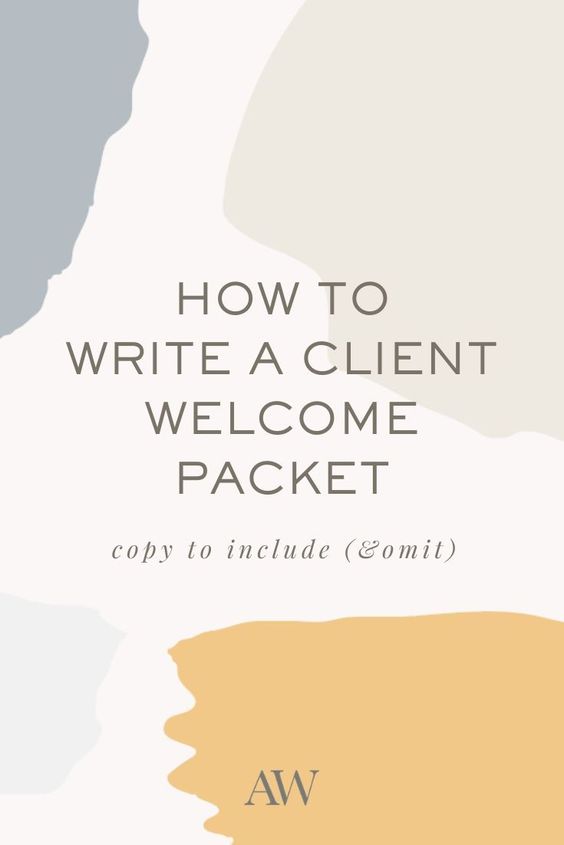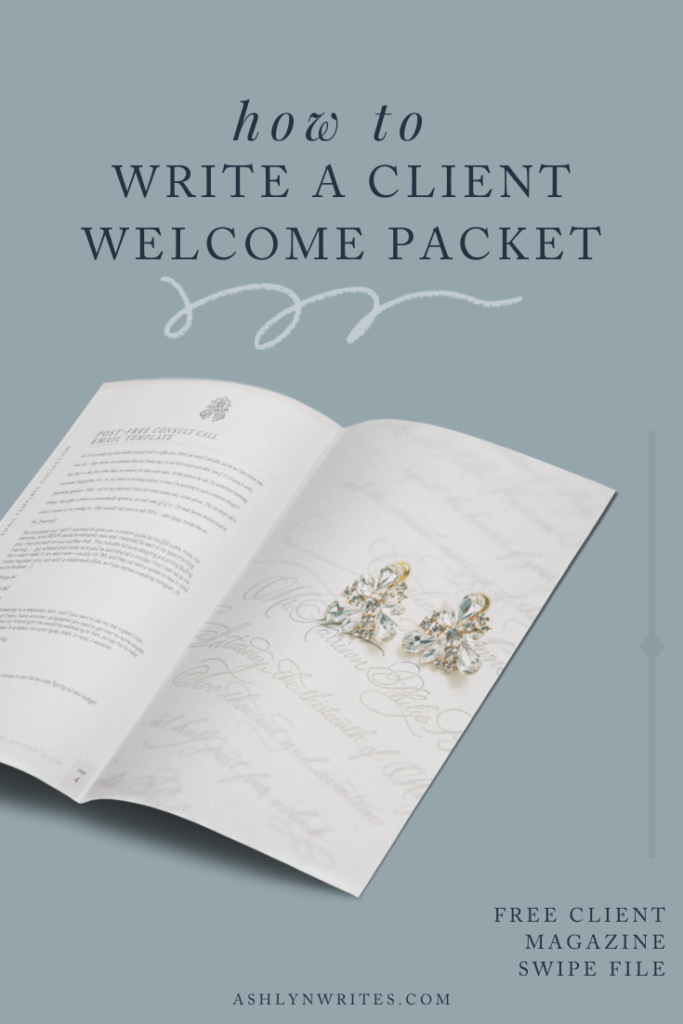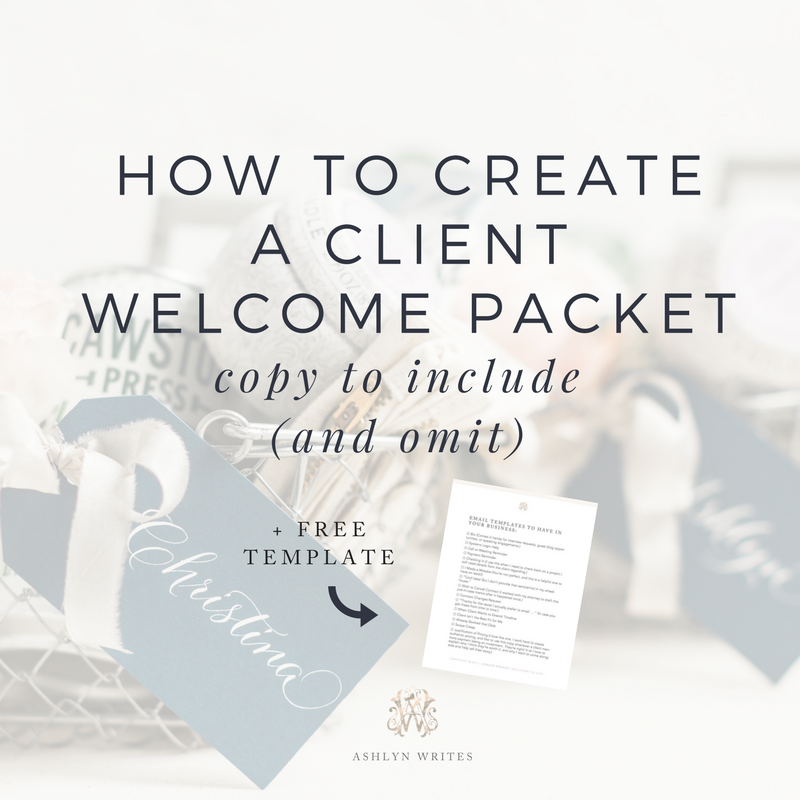The first time I learned about how to create a welcome packets, my clientele looked a *little* different than it does now. 😉
I was a traveling consultant for a collegiate-based women’s organization. I lived out of 2 suitcases and 1 carry-on for a year, and it was my job to communicate with the chapters I was visiting everything from my flight schedule to my expectations for serving their team and how they could . I even learned to oh-so-subtly include things I liked (Mexican food, yoga, going to church), and you’d be surprised how many chapters made sure to get the token chapter yogi to bring me to class with her!
I tell my students you still have to coach the conversion once you’ve booked a client, for a few reasons.
The three biggest reasons?
First, the sale isn’t QUITE over, right? Your client has more payments scheduled, and this deal isn’t signed-sealed-delivered quite yet. While legally it may be, it’s still your goal to coach them through your process and give them the courtesy of an integrity-filled experience.
Secondly, imagine things do go awry with this client. At least you have a paper trail of how you covered your booty and supplied all information well in advance.
Finally, make them happy about their decision to work with you, dang it! When you treasure your clients and feel really proud of the hours you pour into them, it’s important to make them feel acknowledged and get them excited. This streamlines that process a bit. Back when I did marketing with Delta Air Lines, we’d send out surprise and delight tickets to loyal customers—think of your welcome packet as another way to surprise and delight your people.

As far as format, it’s up to you. While we use HoneyBook in my business for CRM, I’ve found that a 13-page PDF’d “magazine” of sorts has been most helpful for passing along information. Can it be 2-3 pages or so? Sure! Just for me and my visually-focused industry, glossy full-bleed pictures look good to break up the copy.
You can customize it for each client or keep it pretty evergreen—my welcome packets are different for each of the 3 services I offer.
Read on for my top 4 tips to writing copy for your welcome kit!
Tip 1: Set expectations and boundaries.
This one’s paramount.
Goes without saying, but as a professional, it’s your job to “manage up” and make expectations crystal clear.
[bctt tweet=”One of the best ways to delight a client even before they’ve met you is to be recommendation-worthy.” username=”via AshlynSCarter”]
Obviously you need to include bits of this prior to the onboarding process (ex. little things like not giving out your cell phone number if that’s a business policy for you), but the bulk of it fits well in your welcome magazine.
I have a whole page devoted to communication policies, including:
- My office hours, because I’m DEFINITELY NOT always available. You’d have to pay more for that. ????
- My expected response time
- The day I batch my client work (click here to read more on my day batching process!)—and do I tackle it all on this day? Nope. But the bulk of what I do for my clients is on the one day a week I have set aside for client work. No calls, no AW marketing tasks, 1 hour of email if that, and pure client work.
- What we’ll use to communicate, which for me is HoneyBook Click here for a free trial!
- How to schedule a call with me
- Where the project timeline lives
- An outline of all the resources I need from them (ex. questionnaire answers, folders with certain docs in them, LastPass accounts, etc.)
Tough as it is, this is the place where you need to be the boss you are and communicate firmly what you will and won’t do. You’ll want to politely but firmly remind them that failing to attend meetings or get feedback to you on time could (ahem, WILL) impact your entire timeline since you’re running a business and serving other clients.
I totally get that this can be sticky, so this post’s freebie is 1 page from my own welcome packet: my communications expectations page.
Go ahead and snag it, but be sure to pepper in your own brand’s tone. It’s okay to be a bit funny or charming here—just act natural!
Tip 2: Include how-to guides.
You’ve likely got a system for how you like to work, right?
Think about what someone new to your business won’t know, and try to grease that slide as best you can. From how to give edits in GoogleDocs, to mini-video tours of your CRM software: think through all the techy bits someone may encounter and walk them through.
I have a how-to guide on:
- How to use HoneyBook, from where/how to login to what to do if they want to add someone to our workspace
- How to give me feedback during our copywriting or stationery design process
- A how-to guide on something that helps them out as a little bonus—for example, for copywriting clients, I give them a list of survey questions they can use to get feedback from their audience. Calligraphy clients get a how-to guide on gathering addresses. Whatever tips or wisdom you can throw in for free here is great!
- Next steps, so they know how to schedule our first call and submit their initial questionnaire.
You may want to also include a bit of copy that communicates how they can schedule a walk-through with you in case you have questions about your software or processes.
Tip 3: Give insight into your company’s culture.
I call it Target-reshelving-syndrome: You stick things in your red basket and before you know it, you’re fingering Essie nail polishes and wondering if anyone will see you stick 2 candles and a scarf on the aisle end.
Ah, buyer’s remorse. It stinks—and your clients aren’t immune.
Remind your client about how excited you are to work with them by reinforcing the company culture they signed up to partner with. Something about you, your personality, and your process appealed, so put them at ease by reminding them your “why.”

Everything’s visually on brand in this document—from fonts to colors—but for photographic imagery, I try to include a lot of images of my studio and me working as opposed to portfolio work. Just the way I roll!
Instead of a bio (I figure they know me at this point—any bio copy they likely saw on my website or in the potential client magazine I sent earlier in the sales process!), I include a brief welcome message and a bit of the why behind what I do.
Tip 4: Keep updating it constantly.
Once you’ve got your welcome packet drafted and organized, you’ll want to proofread it and polish it up as an extension of your brand’s identity.
But, you’re not quite finished. ????
The other section I always include is a FAQ page, and I.update.it.constantly. I like this page because it’s real life, everything from the “Can’t I just text you/Slack you/call you” question I get (A: Push to HoneyBook!) to how I have their work copyrighted so they don’t worry about being copied.
Now what about things I DON’T include? Here’s a short list of 6 things I’ve left off, and why:
- A copy of their signed agreement: to me, that sounds scary, and it’s in our shared workspace CRM, HoneyBook for them to reference any time, which I mention.
- Payment details: Again, I look at a welcome packet as an extension of sales copywriting, so for contractual terms and payment schedules, I point them to our workspace
- A gift: Because that’s in the mail, silly. ????
- Anything scary sounding like “policies and procedures:” I’m not a doctor, and I don’t want anything to sound harsh or clinical from a copywriting standpoint in this magazine. Basically that info’s inside, but it’s framed in an approachable way.
- Social media handles: To me, that feels sleezy at this point. They’re paying me a lot of money, and if they choose to find me and follow me on social media, that’s fine, but I don’t want to push the envelope. I’ll share portfolio work as I can (something I mention in our goodbye packet), so they’ll likely follow/share work then.
- A welcome video, but I kinda like the idea!
Your welcome packet is the glass of champagne toast you give to people who have decided to pay you a lot of money for your time and expertise, of course, but chiefly, it’s a way to step into a leadership capacity.
Creating consistency in your marketing even down to your welcome packet keeps the trust lines open—and it also positions you as the professional and the leader.
Don’t forget your freebie sample from my own welcome magazine to swipe some done-for-you copy!
LOVE THIS SLASH NEED IT BACK-POCKETED FOR LATER?
CLICK BELOW TO PIN IT!

Reading Time: 6 MinutesReading time: 6 min. The first time I learned about how to create a welcome packets, my clientele looked a *little* different than it does now. 😉 I was a traveling consultant for a collegiate-based women’s organization. I lived out of 2 suitcases and 1 carry-on for a year, and it was my job to […]




Really helpful post Ashlyn! I’m in the middle of a massive rebrand/site overhaul so I’m making all new assets, welcome packet included. I’d love to hear about your goodbye packet too!
Christie! I’m so thankful that’s helpful! The whole copy template is coming to the shop this weekend in time for Black Friday … and I’ll post about my goodbye packet, too! 🙂
So helpful, thank you for sharing! I don’t have a welcome packet right now but I’m working on developing one.
Hey, Casey! I excited for you–I think you’ll find it so helpful!
Oh my goodness, THIS IS GOLD! Thank you Ashlyn! ♥
KARIN! You just made my heart dance. 😉 I’m so glad you’ve found it helpful! p.s. Saw your HoneyBook trial come through–I hope you find it helpful! I tried ALL the workflow systems for clients and it’s the one that helped us out the most. 🙂 Enjoy that trial!
You are a lifesaver, literally!! Thanks so much
This is incredible! So much time, effort and detail that goes into your welcome packet. I’m feeling so inspired now after reading this!
Kristen! Thank you for your kind words, they mean the world! 🙂 xx.
Hi Ashlyn! This is so so helpful, thank you for sharing. Can I ask when in the process you send the welcome packet? Is it before they have signed a contract with you?